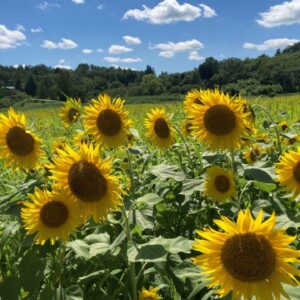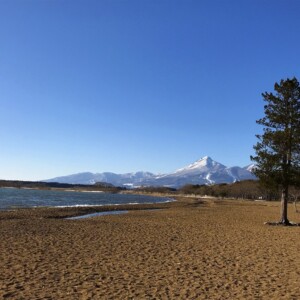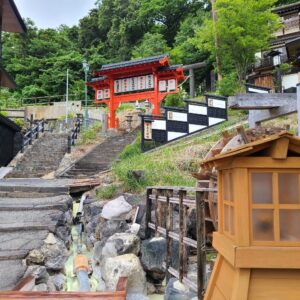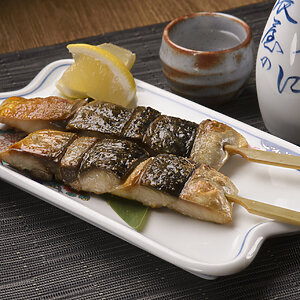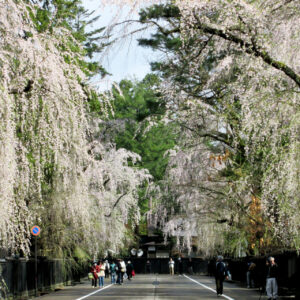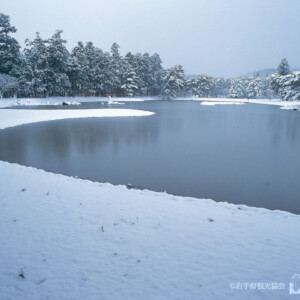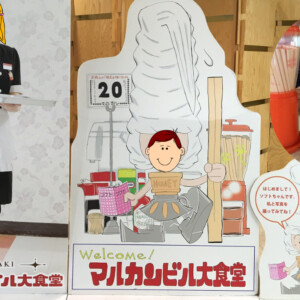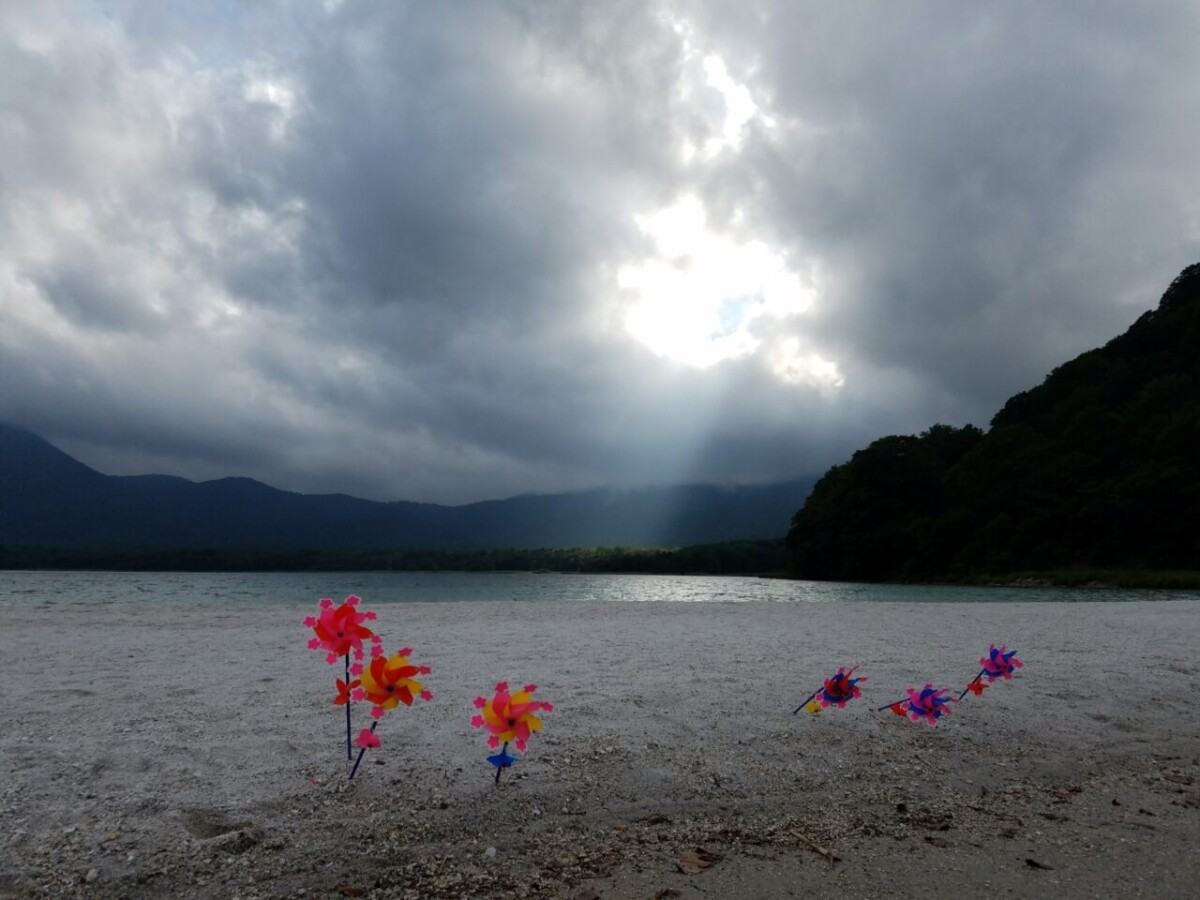
The mysterious world of the Shimokita Peninsula of Geopark: "The northern limit of monkeys on Osoreyama and Butsugaura" [Aomori Prefecture]
table of contents
- 1 Mount Osore, an active volcano representing the Shimokita Peninsula, is a sacred place where the souls of the dead gather.
- 2 “Butokegaura” is a spectacular natural monument created by a volcano.
- 3 Natural Monument “Shimokita Peninsula Monkeys and the Northern Limit of Monkey Habitat”
- 4 Shimokita Peninsula - The world's northernmost Japanese macaque expands its range
- 5 ``Wakinosawa Monkey Park'' where you can see the ``northern limit of Japanese macaques''
- 6 Nature, animals, gourmet food, hot springs. The charming Shimokita Peninsula
Shimokita Peninsula is a peninsula that protrudes towards the Pacific Ocean side of Aomori Prefecture, the northernmost tip of Honshu.
often compared to a shape similar to "Kintaro's Unbelievable" or an axe Omazaki (Omazaki/Oma Town, Aomori Prefecture), the northernmost tip of the Shimokita Peninsula, is about 8 minutes' latitude, or 15km north, from Shirakami Cape (Shirakami Misaki/Matsumae Town, Hokkaido), the southernmost tip of Hokkaido, just beyond the Tsugaru Strait (1 minute's latitude is 1,852m = 1 nautical miles).
* Cape Oma 41 degrees 32 minutes north latitude / Cape Shirakami 41 degrees 24 minutes north latitude
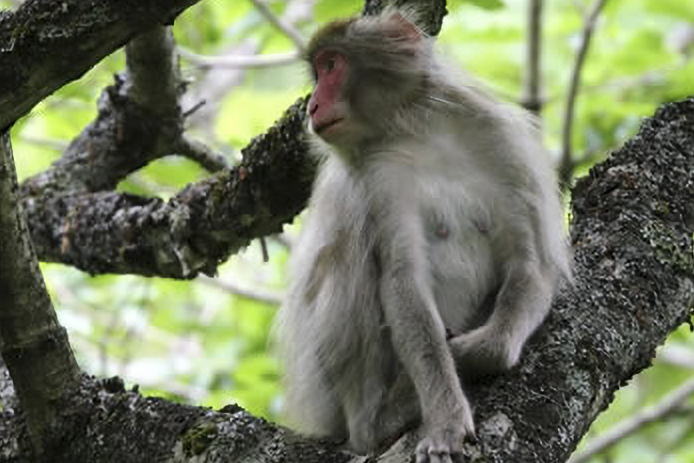
Mount Osore, an active volcano representing the Shimokita Peninsula, is a sacred place where the souls of the dead gather.
The Shimokita Peninsula is a peninsula formed by volcanoes belonging to the Nasu Volcanic Belt, which extends south from Rishiri Island in Hokkaido to Mt. Asama in Nagano Prefecture. is.
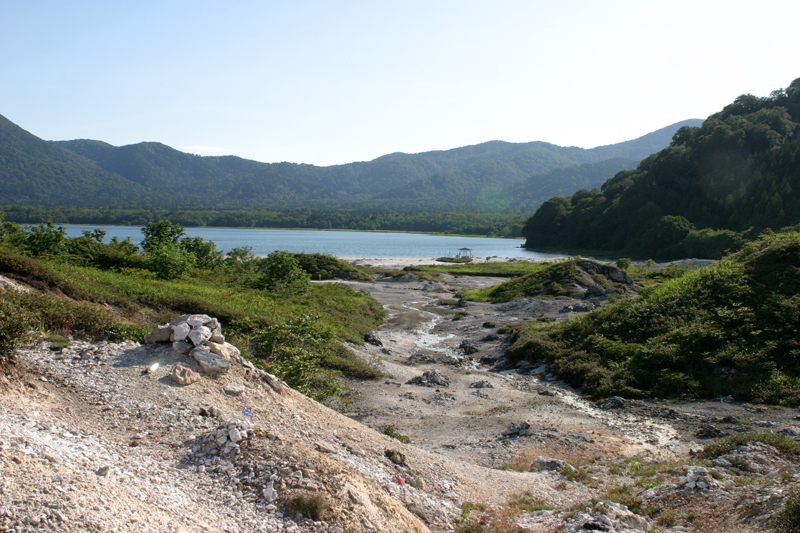
The most representative volcano of the Shimokita Peninsula Osorezan , with an outer rim of several lava domes, centering on the 3km-diameter caldera lake (Lake Usori/Usoriko/official name: Lake Usorisan). The highest peak of the outer rim mountain is Mt. Kamaga, Mt. Kamafuseyama, and 878m above sea level.
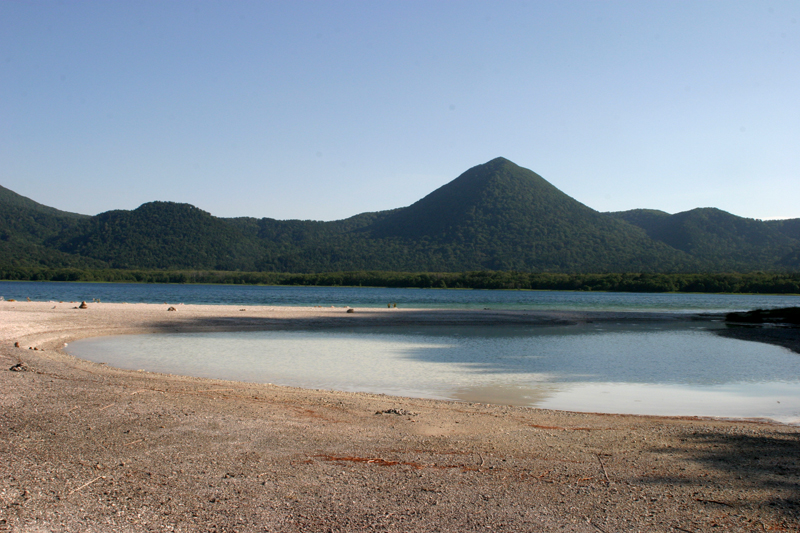
The rocky, sulfurous dioxide-gas-filled earth that spreads around the crater of the former volcano, is the desolate earth filled with rocks , and the white sandy beach on the shore of Lake Usori paradise has been worshiped for about 1,200 years a sacred site where the souls of the dead gather
the itacs which can bring in the souls of the dead , also gives us a sense of the great waste of a sacred place.

Osorezan Bodhiji Temple <Information>
- Facility name: Osorezan Bodaiji Temple
- Address: 3-2 Tanabe Usoriyama, Mutsu City, Aomori Prefecture
- Phone number: Osorezanji Office 0175-22-3825) / Shukubo 0175-22-3826
- Opening period: May 1st to the end of October every year
- Entrance fee: 500 yen for adults, 100 yen for elementary and junior high school students
- URL: Osorezan Bodaiji Temple
Google Map
“Butokegaura” is a spectacular natural monument created by a volcano.
The landscape with the giant rocks and strange rocks that are often found on the western coast of the Shimokita Peninsula was created by a volcano. In particular, "Butgaura" is a spectacular view that has been designated as a national scenic spot and a natural monument
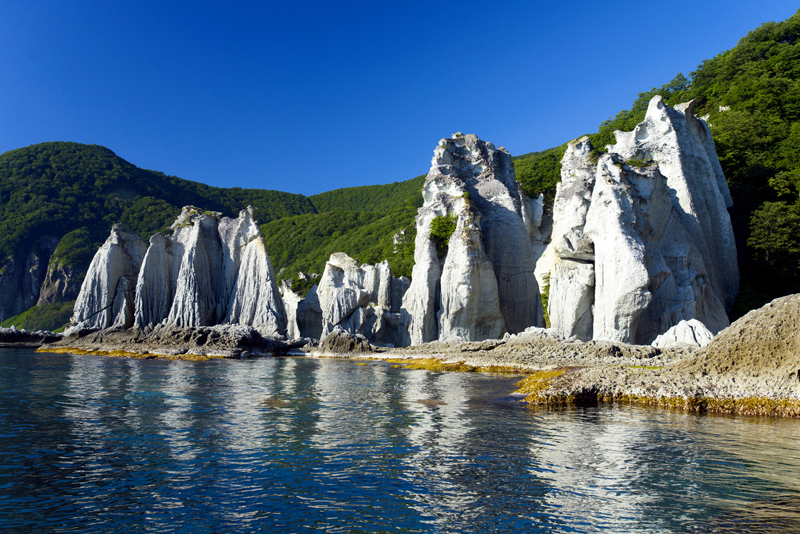
The "Budgaura" is a series of strange rocks with mysterious shapes, named the 500 Arhats, the Buddha's neck, and the Bowbuiwa rock.
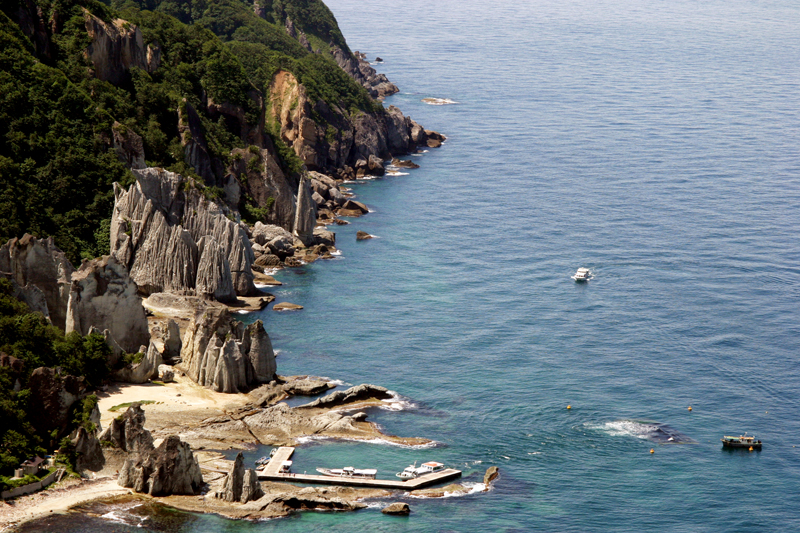
Bossaurus, directly west of the sacred land Osoresan, the place where the dead depart to the afterlife , and the entrance to the return of the souls that are recalled by the Itacles, and rocks and beaches were given Buddhist names. During the green season, tourist boats operate and you can see the scenery from the sea.
Hotokegaura<Information>
- Facility name: Hotokegaura
- Phone number: 0175-38-2244 (Butokegaura Marine Tourism)
- *Sightseeing boats usually operate from late April to the end of October.
- URL: Hotokegaura Maritime Tourism
Google Map
Natural Monument “Shimokita Peninsula Monkeys and the Northern Limit of Monkey Habitat”
The Shimokita Peninsula is the northern limit of Honshu , but it is also the northern limit of animals living in Honshu. Black bears, Japanese antelope, Japanese antelope, wild boar, Japanese macaque, etc., but on the other hand, brown bears, Japanese deer, northern foxes, and Japanese macaques in Hokkaido do not live south of the Shimokita Peninsula.

This is because the Tsugaru Strait is about 450m deep, and even shallow areas are about 130m wide, and the land between Honshu and Hokkaido has never been connected to land, and the ocean currents are fast flowing, so it is thought that the animals that live in Honshu and Hokkaido are completely different. This difference was noticed by British zoologist Thomas Brakeston, who was staying in Japan, and was presented at the conference in 1883 (Meiji 16). Therefore, the division of animals caused by the Tsugaru Strait is called the Brakestone Line
Shimokita Peninsula - The world's northernmost Japanese macaque expands its range
The Shimokita Peninsula is the northernmost animal, and the ones that are not in Hokkaido include monkeys and wild boars, but the Japanese macaques that live on the Shimokita Peninsula are not only Japanese but also humans, and are the "primates that live in the northest of the world."
Japanese macaques on the Shimokita Peninsula became known nationwide in the 1960s, when they were spotted on the coast of the Wakinosawa district in the southwestern part of the Wakinosawa district.
In 1970, monkeys from all over the Shimokita Peninsula, which had four groups at the time, were prohibited, and three of them, which live in the Wakinozawa area, were designated as national natural monuments for the purpose of protecting the wild state.
A survey conducted in the 1970s confirmed about 230 animals in six groups, but their habitat was limited to the west coast area, including Wakinozawa.
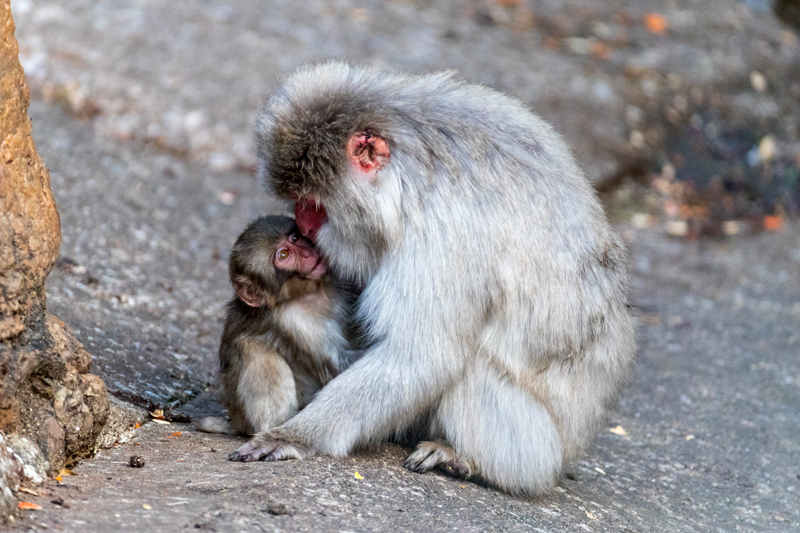
However, according to a survey conducted in March 2000, the number had increased to about 800 individuals in 20 groups, and they were now being sighted throughout the Shimokita Peninsula. Now, about 20 years later, the number has increased to about 2,500.
Japanese macaques originally live in the south, but they have gradually adapted to Japan's climate and have adapted to live even in the extremely cold Shimokita Peninsula. Of course, conservation policies have something to do with the proliferation of Japanese macaques in the Shimokita Peninsula in such a short period of time, but it is also true that global warming has raised average temperatures and made it easier to live there. is.
the northernmost monkeys in the world , but if they increase so much, they will face major problems in their interactions with humans. One of them is crop damage. Japanese macaques remain important to the people of Shimokita, but in a sense they have also become hostile animals. It may be time for us to rethink how we can successfully separate ourselves from people, including protection policies.
``Wakinosawa Monkey Park'' where you can see the ``northern limit of Japanese macaques''
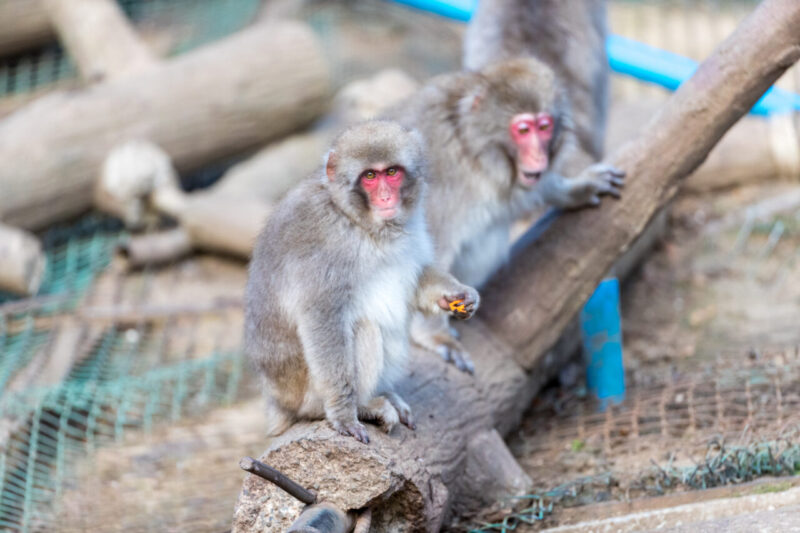
Wakinosawa No Sawaya Enkoen ( Wakinozawa, Mutsu City) is a facility where you can raise and visit about 50 Japanese macaques. Located on the grounds of Wakinosawa Roadside Station, you can visit the "Northern Japanese macaques" that are kept in a wild form.
Wakinozawa Nozomi Park <Information>
- Facility name: Wakinozawa Monkey Park
- Address: 201-211 Wakinozawa 7, Mutsu City, Aomori Prefecture
- Phone number: 0175-44-3252 (Roadside Station Wakinosawa "Refresh Center Tara no Sato")
- Opening hours: 10:00-15:00
- Admission fee: 200 yen for adults, 100 yen for elementary, junior high and high school students
- Closed days: Open all year round
Google Map
Nature, animals, gourmet food, hot springs. The charming Shimokita Peninsula
The entire Shimokita Peninsula Shimokita Geopark also designated as a National Park (Shimokita Peninsula Quasi-National Park) a park of Earth (geopark) where you can also encounter natural sculptures created by volcanoes, Osoreyama and Butsugaura, as well as animals living at the northern limit, such as Japanese macaques .
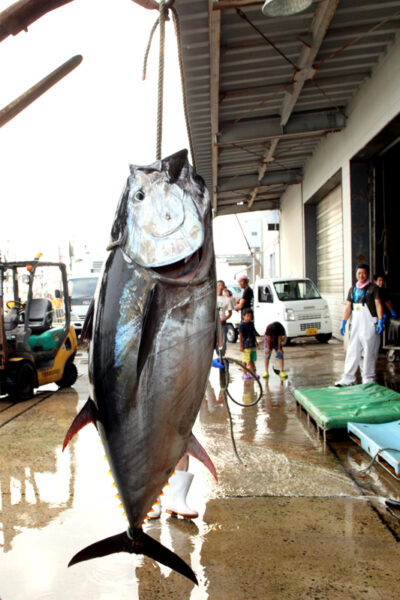
Also recommended are the exquisite seafood such as Oma tuna brought by the complex ocean currents surrounding the peninsula and scallops from Mutsu Bay, as well as the hot springs brought by the volcano. Why not take a trip to the charming Shimokita Peninsula?
Shimokita Peninsula <Information>
- Shimokita Navi URL: Shimokita Navi
- Shimokita Geopark URL: Shimokita Geopark Council



![[Tohoku Autumn Foliage Driving Map: Aomori Edition] 3 Recommended Driving Courses and Local Cuisine! Autumn leaves at Sukayu Onsen in Hakkoda](https://jp.neft.asia/wp-content/uploads/2024/10/33112629_m-150x150.jpg)
![[Shimokita Peninsula, Aomori Prefecture] Geopark Shimokita Peninsula. A rich hot spring springs from the northernmost peninsula of Honshu 24734759_m](https://jp.neft.asia/wp-content/uploads/2023/02/24734759_m-150x150.jpg)
![The gorgeous "Noheji Gion Festival" and Kitamae Ship port call "Noheji" [Aomori Prefecture] 4031_Noheji Gion Festival](https://jp.neft.asia/wp-content/uploads/2023/03/27d8816076df6701eb2d6ec6c91e5169-150x150.jpg)
!["Yaki Ikadori" is famous for its squid curtains! Many repeat customers are coming to the condensed flavor [Aomori Prefecture] 1088_Squid Curtain](https://jp.neft.asia/wp-content/uploads/2018/11/621b49eff7eed2fb8caee235a00963e0-150x150.jpg)
![[Aomori Prefecture] Not just food! Shining techniques from Tohoku! 5 selections of craft souvenirs 1 Tsugaru lacquer](https://jp.neft.asia/wp-content/uploads/2021/11/832bdccffb961dac52ac9e3b69594280-150x150.jpg)
![[Aomori Prefecture] How cold is it in Aomori? Introducing cold weather measures for your winter trip to Aomori! 25097708_m](https://jp.neft.asia/wp-content/uploads/2023/02/25097708_m-150x150.jpg)
![[Aomori Prefecture] Let's go on a journey to see clay figures! Introducing highlights and spots! doguu1](https://jp.neft.asia/wp-content/uploads/2023/02/doguu1-150x150.jpg)


